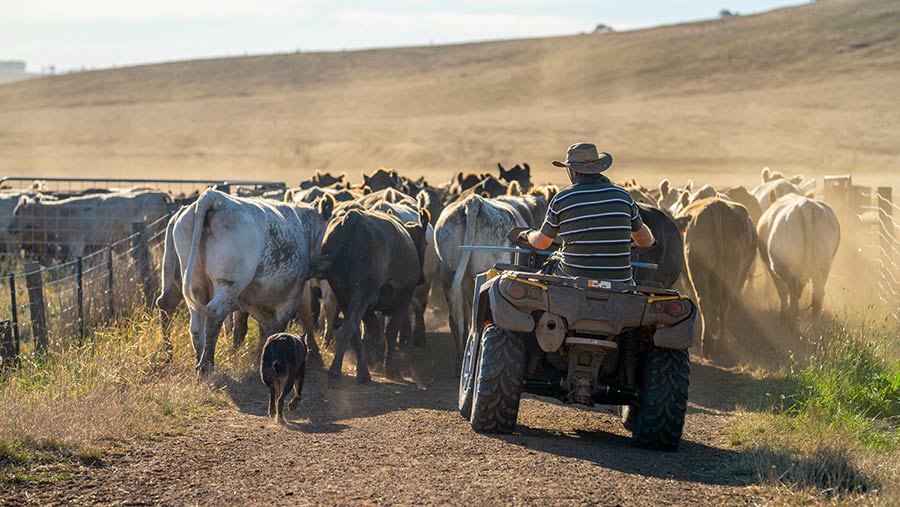Australian beef output poses risk to UK as trade deal begins
 © William/Adobe Stock
© William/Adobe Stock Beef supply in Australia is forecast to increase by 7% over the next 12 months, according to global co-operative bank Rabobank, raising the prospect of more shipments to the UK.
The free-trade agreement between the UK and Australia came into effect on 31 May, and higher beef production in Australia is likely to drive an increase in export volumes.
Rabobank’s quarterly global beef outlook says that with production expanding, both Brazil and Australia are relying on an increase in export volumes, with domestic consumption either static or declining.
See also: Beef prices stay at record highs as trade deal looms
China is typically a key export market. However, Rabobank warns that Chinese imports could slow and potentially decline later in 2023. Japanese beef import volumes also remain at fairly low levels.
This could mean that more beef than previously forecast could be sent to the UK market from Australia this year.
However, analysts say the new agreement is unlikely to change trade flows significantly.
Global beef trade
Global beef supply remains fairly steady for the year ahead, with increased production in Australia and Brazil offsetting declines in the US, according to the report.
Rabobank senior analyst Angus Gidley-Baird said: “While global supplies remain balanced, cattle prices in the US and Canada push into new record territories.
“This is driven by declining production volumes and firm demand. It stands in contrast to other beef producing and exporting countries, which have declining or steady cattle prices.”
In Europe, beef production is down slightly and is forecast to decline further in the coming months. However, falling milk prices are likely to encourage more cows from the dairy sector to be culled.
Beef production in New Zealand was up 1% year on year during the first quarter of 2023, while exports were 2% higher on the year.
